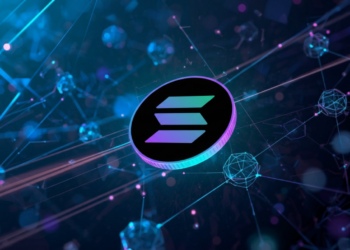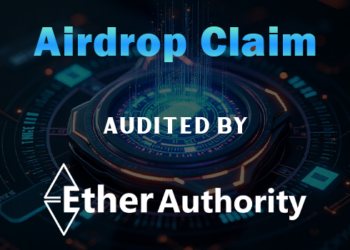As the decentralized finance (DeFi) space keeps advancing, MakerDAO and its stablecoin, DAI, have become critical components that attract the attention of both crypto enthusiasts and traditional financial experts alike. As blockchain technology continues to disrupt traditional financial systems, MakerDAO stands out by offering an innovative solution that combines decentralization, transparency, and stability, offering significant potential for users in a world increasingly seeking alternatives to traditional banking systems.
But what exactly is MakerDAO, and how does its stablecoin, DAI, work? In this blog post, we will explore the ins and outs of MakerDAO, its core features, the technology behind it, and its role in the broader cryptocurrency and DeFi ecosystem.
Understanding MakerDAO: A Brief Overview
MakerDAO is a decentralized autonomous organization (DAO) that operates on the Ethereum blockchain. It enables users to borrow and lend cryptocurrency in a trustless environment, eliminating the need for intermediaries like banks. The DAO’s primary product is DAI, a stablecoin that aims to maintain a value of 1 USD despite the volatility typically seen in the cryptocurrency markets.
Unlike traditional stablecoins that are pegged to fiat currencies (such as Tether or USDT, which are backed by real-world assets), DAI is collateralized by cryptocurrency assets, mainly Ether (ETH), and is governed by the MakerDAO community. The system relies on smart contracts to maintain stability and ensure that the supply of DAI remains balanced relative to its collateral.
How Does MakerDAO Work?
At its core, MakerDAO is designed to give users access to a decentralized, algorithmic stablecoin. Here’s how the process works:
- Collateralized Debt Position (CDP):
To mint DAI, users must lock up collateral, usually in the form of Ether (ETH), into a Collateralized Debt Position (CDP) on the MakerDAO platform. When they do this, they are essentially taking out a loan in DAI that is secured by their collateral. - Minting DAI:
Once the collateral is locked, users can mint DAI in a 1:1 ratio with the value of their collateral. For instance, if a user locks up 2 ETH, they could potentially mint DAI worth the equivalent value of 2 ETH. This process is performed automatically through smart contracts without the need for a middleman. - Stability Fee:
MakerDAO charges a stability fee to users who mint DAI. This fee ensures that the system remains sustainable and can incentivize users to repay their loans. Stability fees are paid in MKR, the native governance token of the MakerDAO system, and are typically lower than traditional interest rates. - Liquidation Mechanism:
If the value of the collateral falls below a certain threshold, the collateral will be automatically liquidated to repay the loan, preventing the system from becoming undercollateralized. This mechanism ensures the system stays solvent and prevents defaults, providing added security for users. - Governance via MKR Tokens:
MKR tokens are the governance tokens for MakerDAO. MKR token holders participate in the decision-making process by voting on proposals related to system upgrades, stability fees, collateral types, and other critical parameters. This decentralized governance is one of the key features that differentiates MakerDAO from traditional financial systems.
What Is DAI?
DAI is a decentralized stablecoin issued by MakerDAO, and it is designed to maintain a value close to 1 USD. The uniqueness of DAI lies in its decentralized, collateral-backed nature, which sets it apart from traditional fiat-backed stablecoins. Unlike USDT, USDC, or other fiat-backed stablecoins, DAI is governed by the MakerDAO community and secured by cryptocurrency collateral like Ether.
DAI operates through the use of smart contracts, which are self-executing programs that allow the MakerDAO protocol to manage the creation, management, and liquidation of loans without the need for centralized entities or intermediaries. These smart contracts ensure that DAI remains pegged to the value of 1 USD, despite fluctuations in the value of the collateral backing it.
The Key Features of DAI
- Decentralization:
Unlike other stablecoins, which are managed by central authorities or companies, DAI is entirely decentralized and governed by the MakerDAO community. This ensures that no single entity has control over its issuance or stability. - Collateral-Backed:
DAI is not printed or minted in the traditional sense. Instead, it is backed by collateral (mostly Ether, though other assets have been considered over time). This collateralization ensures that DAI remains stable and backed by real assets in a transparent, on-chain manner. - Governance:
MKR token holders have the power to vote on critical issues regarding the MakerDAO system, including collateral types, risk management protocols, and stability fees. This decentralized governance model ensures that DAI is managed in the interest of the broader community, not a centralized entity. - Stability Mechanism:
DAI maintains its peg to the USD through an algorithmic system controlled by the MakerDAO protocol. If DAI’s price drifts too far from $1, the system can adjust parameters such as the stability fee or liquidation thresholds to help bring it back to its target value.
The Benefits of Using DAI
- Stability in Volatile Markets:
For investors, DAI offers a way to hedge against the volatility of other cryptocurrencies. While Bitcoin, Ether, and other cryptocurrencies may experience significant price fluctuations, DAI remains relatively stable, providing a safe haven for users who want to preserve their value in the crypto space. - Decentralized Finance (DeFi) Compatibility:
DAI is widely accepted across various DeFi protocols. From lending platforms to decentralized exchanges, users can leverage DAI as collateral, borrow it, or trade it without needing a bank or other centralized institution. This makes DAI a fundamental part of the growing DeFi ecosystem. - Lower Risk Exposure:
Since DAI is backed by collateral and governed by decentralized smart contracts, users are less exposed to systemic risks than with traditional fiat-backed stablecoins, which rely on the solvency of centralized institutions. - Transparent and Secure:
Because DAI operates on the Ethereum blockchain, its transactions are transparent and secure. Users can always verify the collateral backing their DAI, ensuring that the system remains fully collateralized and solvency is maintained.
Risks and Challenges of MakerDAO and DAI
While MakerDAO and DAI offer significant benefits, they are not without risks. Some of the potential challenges include:
- Collateral Risk:
If the value of the collateral (e.g., Ether) decreases significantly, users may face liquidation. This risk is especially pertinent during periods of high volatility in the crypto market. - Smart Contract Vulnerabilities:
Like all decentralized applications (dApps), MakerDAO relies on smart contracts. If a bug or vulnerability is discovered in the code, it could potentially be exploited by malicious actors, threatening the stability of the system. - Governance Risks:
MakerDAO’s decentralized governance system relies on MKR token holders making decisions. If the voting system becomes dominated by a small group of wealthy participants, it could lead to a concentration of power and potentially harmful decisions for the broader community.
The Future of MakerDAO and DAI
Looking forward, MakerDAO continues to evolve. As the DeFi ecosystem grows, more assets are likely to be added to the system, diversifying the collateral pool and potentially making DAI even more robust. Additionally, the integration of Layer 2 scaling solutions such as Optimism and Arbitrum is expected to lower transaction fees and improve the scalability of MakerDAO’s protocols.
Moreover, MakerDAO has plans to expand its collateral portfolio beyond Ether, with other assets like BAT (Basic Attention Token) and USDC already integrated, further solidifying DAI’s role in the decentralized ecosystem.
Conclusion: Why MakerDAO and DAI Matter
In conclusion, MakerDAO and its stablecoin, DAI, represent a major innovation in the cryptocurrency space. By offering a decentralized, collateral-backed stablecoin, MakerDAO is providing a stable, secure alternative to traditional fiat-backed stablecoins, making it a valuable tool for users in the crypto and DeFi markets.
Whether you’re looking to hedge against cryptocurrency volatility, borrow funds without a centralized bank, or participate in decentralized governance, MakerDAO and DAI offer an intriguing solution. However, like all DeFi protocols, there are inherent risks that users should be aware of, particularly with the volatility of the collateral assets. By understanding these risks and rewards, users can make informed decisions and leverage the potential of DAI in the decentralized finance revolution.
Join Us : Twitter | Website | GitHub | Telegram | Facebook | YouTube























